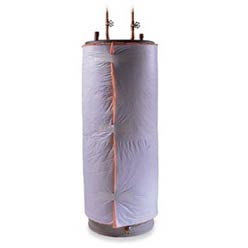If you need to create warmth inside your attic, save big by blowing inside insulation warmth oneself. The good qualities cost $1, 500 in order to $2, 000 to complete the 1, 200-sq. -ft. household. You can apply that oneself for approximately $500. Spitting out attic warmth isn’t tough, nevertheless it’s messy, exhausted operate. To create that less complicated, get the tool in addition to reserve a couple days: just one with regard to attic preparation plus the minute to truly knock back your warmth. From the stop on the weekend break you’re going to possibly be uncomfortable in addition to worn out. But keeping $1, 000 or higher may make up for your tender back.
This long-term benefit is outstanding as well. You can observe your efforts bills drop by approximately 15 in order to 25 % based on your weather in addition to active amounts of warmth. And you will in addition be entitled to the tax credit ratings about the expense of your warmth.
To demonstrate you tips on how to get the job done right, most of us questioned your skilled to express their methods for creating the project proceed effortlessly in addition to enable you to prevent the top several
attic-insulation mistakes.
Seal leaksYank back the existing warmth in addition to utilize increasing bottle of spray froth in order to close any kind of breaks all-around plumbing water lines, ceiling perforations in addition to slots where by electric powered wire connections snake by means of. “Make confident in order to close all the way up about the water pipe, ” says Olson. Pertaining to breaks 1/4 inside. as well as a smaller amount, utilize caulk rather than increasing froth.
Add ventilationYank the existing warmth from your roof. Placement the newest in-take chute therefore the bottom part expands 6 inside. to the overhang in addition to staple that in location. Olson recommends using a contract stapler instead of the retracted stapler. “It’s additional precise in addition to there’s a smaller amount chance you’ll crumple your chute. ”
“In 95 pct on the households most of us work with, your in-take chutes usually are missing out on as well as aren’t correctly set up, ” says Olson. With out these, you’re not having the almost all through your insulation’s R-value since oxygen would need to move correctly on the eaves to eliminate wetness within the wintertime in addition to temperature within the summer time.
To ensure active chutes aren’t impeded, stand within a darker attic to see whether light on the eaves is selection throughout the vents. Exchange any kind of chutes which might be impeded, ruined as well as missing out on. You’ll uncover equally plastic-type material in addition to froth in-take chutes in the home facilities. Olson advises employing froth chutes. “They’re additional strict in addition to there’s a smaller amount prospects for these having crumpled as well as squeezed any time you’re putting in these.” Yank back the existing warmth to help you to observe out there to the border on the eaves, in addition to purchase a in-take chute in each and every rafter room.
Insulate access waysCover your attic hatch that has a cushion regarding fiberglass warmth. “You want a pleasant, big puffy cushion regarding warmth to avoid any kind of oxygen water leaks, ” says Olson. Slice a couple levels regarding
R-19 fiberglass batt insulation slightly larger than your hatch in addition to staple duct recording to the hatch sides in order to safe that set up.
To hold your warmth by decreasing throughout the attic hatch launching, complete a 2x12 dam about the hatch border. “Then, to actually close your attic entry way up snug, ” says Olson, “lay fiberglass batt warmth on the inside of your hatch as well as door in addition to put that way up snug being a Holiday present." You'll be able to insulate your hatch door even though you’re into the attic as well as go the entrance way out there in addition to do it additional easily with a tarp outdoors.
Mark reference pointsCompare well on the drywall in order to tag your sought after warmth level. Start using a long term gun in order to tag the particular level each and every number of trusses and that means you know you've even insurance about the entire room.
When you're blowing warmth, it could find messy in addition to tough to see whether you have got that serious ample about the entire attic. Mark the desired level about diverse roof trusses about the attic when you star.




















